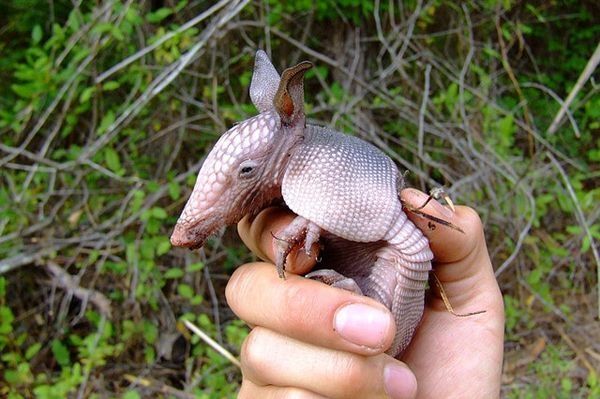|
|
Baby Armadillo
|
In common with other xenarthrans, armadillos in general have low body temperatures (33–36 °C) and basal metabolic rates (from 40–60% of that expected in a placental mammal of their mass). This is particularly true of types that specialize on using termites as their primary food source (for example, Priodontes and Tolypeutes).
Armadillos have poor vision, but large eyes.
The armor is formed by plates of dermal bone covered in relatively small, overlapping epidermal scales called "scutes", composed of bone with a covering of horn. In most species, there are rigid shields over the shoulders and hips, with a number of bands separated by flexible skin covering the back and flanks. Additional armor covers the top of the head, the upper parts of the limbs, and the tail. The underside of the animal is never armored, and is simply covered with soft skin and fur.
This armor-like skin appears to be the main defense of many armadillos, although most escape predators by fleeing (often into thorny patches, from which their armor protects them) or digging to safety. Only the South American three-banded armadillos (Tolypeutes) rely heavily on their armor for protection. When threatened by a predator, Tolypeutes species frequently roll up into a ball. Other armadillo species cannot roll up because they have too many plates. The North American Nine-banded Armadillo tends to jump straight in the air when surprised, and consequently often collides with the undercarriage or fenders of passing vehicles.
|
|









